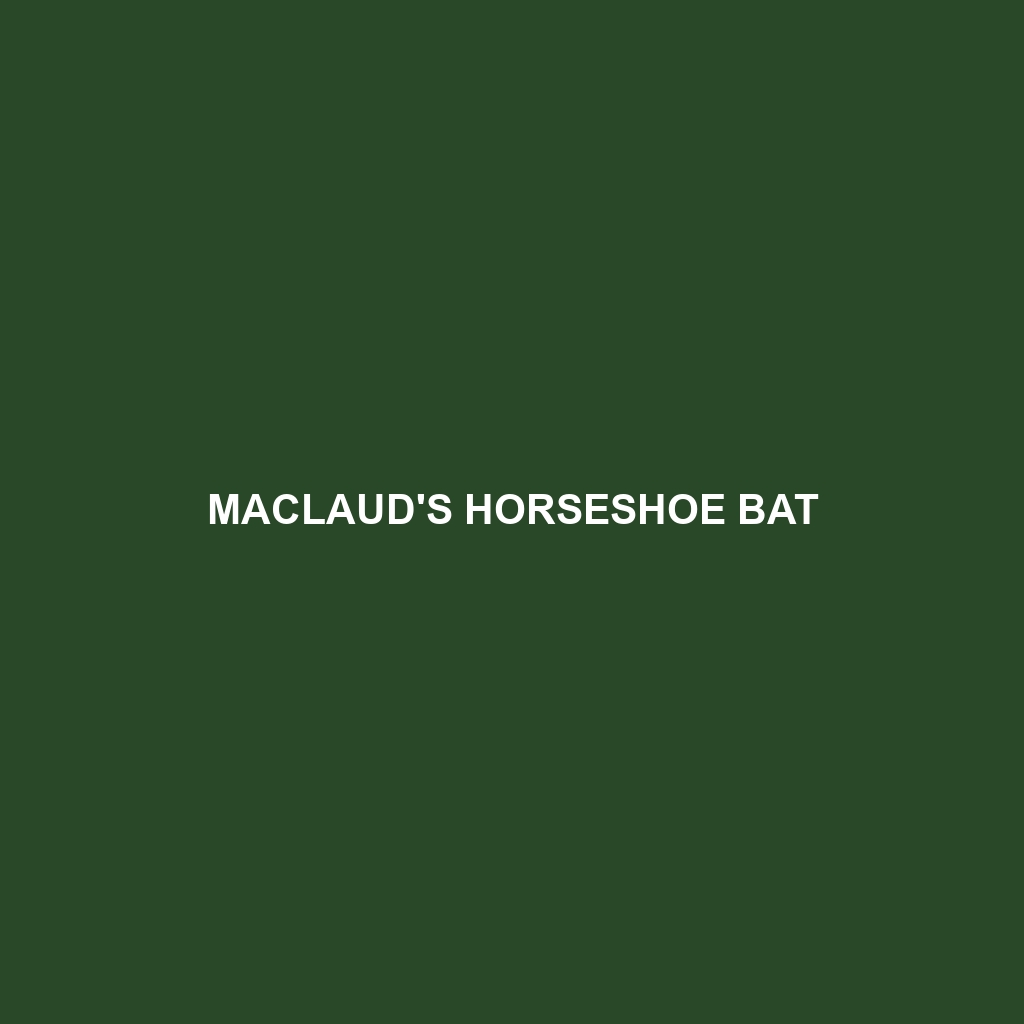Mount Mabu Horseshoe Bat ()
Common Name: Mount Mabu Horseshoe Bat
Scientific Name:
Habitat
The Mount Mabu Horseshoe Bat is primarily found in the humid montane forests of Mozambique, particularly around Mount Mabu. This habitat is characterized by dense vegetation, high humidity, and a diverse range of flora and fauna. The species thrives in elevations that provide cooler temperatures and abundant roosting sites within tree hollows and caves.
Physical Characteristics
The Mount Mabu Horseshoe Bat typically measures about 4 to 6 inches in length, with a wingspan reaching up to 12 inches. Its fur is usually dark brown or grayish, providing excellent camouflage among the forest foliage. A distinctive feature of this species is its unique horseshoe-shaped noseleaf, which plays a crucial role in echolocation. The bat’s elongated ears and large eyes are adapted for low-light environments, making it an effective nocturnal predator.
Behavior
Mount Mabu Horseshoe Bats are primarily nocturnal, emerging at dusk to forage for food. They exhibit a range of behaviors including significant social interactions within roosts. These bats have been observed engaging in vocalizations and grooming activities. During the day, they roost in large colonies, typically in tree cavities and caves, which provide shelter from predators and harsh weather.
Diet
The diet of the Mount Mabu Horseshoe Bat mainly consists of insects, particularly moths and beetles. They utilize echolocation to locate prey in dense foliage, making them efficient hunters. Their feeding habits are crucial in controlling insect populations, and they often forage in open spaces close to water sources, where insects are abundant.
Reproduction
Breeding season for the Mount Mabu Horseshoe Bat typically occurs from late spring to early summer. Female bats give birth to one pup per breeding season, which they care for tirelessly until it is capable of flying independently. Maternity roosts are often formed, where several females may give birth and raise their young together, providing a communal protection strategy against predators.
Conservation Status
The Mount Mabu Horseshoe Bat is currently listed as Vulnerable due to habitat loss and degradation resulting from deforestation and agricultural expansion. Conservation efforts are crucial to preserve their natural habitat and ensure the survival of this unique species.
Interesting Facts
One fascinating aspect of the Mount Mabu Horseshoe Bat is its long lifespan, which can exceed 15 years in the wild. Additionally, this species is a critical component of its ecosystem, as its echolocation abilities contribute to the balance of insect populations in its habitat.
Role in Ecosystem
Mount Mabu Horseshoe Bats play a vital role in their ecosystem, aiding in the pollination of various plant species and controlling insect populations. Their presence contributes to the overall biodiversity of the montane forest, highlighting the intricate relationships between species within this environment.
